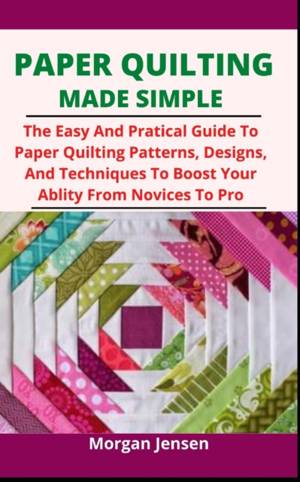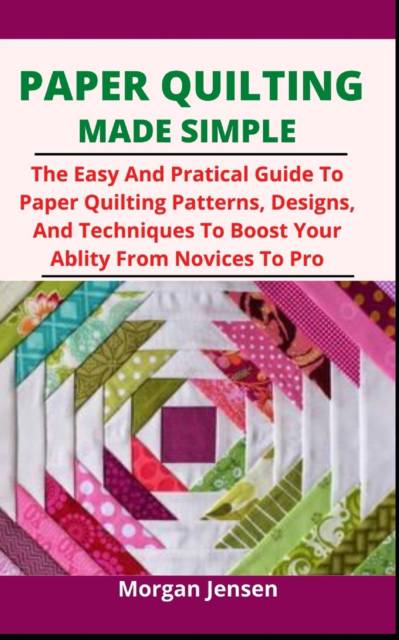
- Afhalen na 1 uur in een winkel met voorraad
- Gratis thuislevering in België vanaf € 30
- Ruim aanbod met 7 miljoen producten
- Afhalen na 1 uur in een winkel met voorraad
- Gratis thuislevering in België vanaf € 30
- Ruim aanbod met 7 miljoen producten
Zoeken
Paper Quilting Made Simple
The Easy And Practical Guide To Paper Quilting Patterns, Designs, And Techniques To Boost Your Ability From Novices To Pro
Morgan Jensen
Paperback | Engels
€ 8,95
+ 17 punten
Omschrijving
Foundation paper piecing is like the paint-by-numbers of quilting. You use a paper template to define which material goes, then sew each the paper and the material collectively alongside dotted lines. Remove the paper, and voilà - you have a flawlessly pieced block!That flawlessly pieced block is the purpose pro quilters and novices alike love this method - it permits you to attain a degree of precision that's fairly difficult to pull off with common piecing. Here's how to use it on your subsequent quilt.What You NeedPaper piecing quilt patternFabricThreadSewing pinsRotary cutter or scissors (you'll be slicing each paper and fabric)Glue stick (optional)Instructions1. Prep Your MaterialsPrint your template onto well-known pc paper or skinny basis paper. Cut roughly around the template, leaving about 1″ around every edge.Cut your cloth into portions massive adequate to cowl their numbered sections. You can additionally reduce the material to the dimension of the complete block, leaving a 1″ buffer on all edges.2. Place Section 1paper piecing 1Place the cloth for area 1 over area 1 of the template, so the incorrect facet of the cloth touches the incorrect facet of the template (back of paper). Make positive your cloth is large than the part 1 outlines. Pin or impervious the cloth with the use of a dab of glue.Pro Tip: Hold the paper up to a mild supply to make certain the cloth greater than the overlaps the define for area 1.3. Place Fabric 2paper piecing 2With the material facet of your template going through you, area cloth two on the pinnacle of area 2, proper aspect down (the proper aspects of each fabric need to face every other). Check on the paper facet of your template to make certain one straight area of the new cloth overlaps the line that separates sections 1 and 2, and that the cloth for part two covers the area entirely.
Specificaties
Betrokkenen
- Auteur(s):
- Uitgeverij:
Inhoud
- Aantal bladzijden:
- 52
- Taal:
- Engels
Eigenschappen
- Productcode (EAN):
- 9798509561894
- Verschijningsdatum:
- 27/05/2021
- Uitvoering:
- Paperback
- Formaat:
- Trade paperback (VS)
- Afmetingen:
- 127 mm x 203 mm
- Gewicht:
- 58 g

Alleen bij Standaard Boekhandel
+ 17 punten op je klantenkaart van Standaard Boekhandel
Beoordelingen
We publiceren alleen reviews die voldoen aan de voorwaarden voor reviews. Bekijk onze voorwaarden voor reviews.











